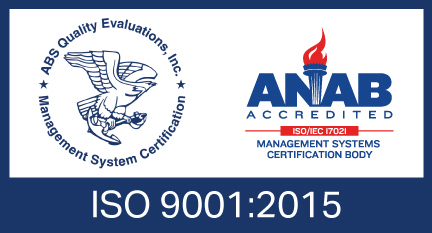There are several reasons why your contact center needs Over-the-Phone Interpretation. For one, multilingual support removes language barriers with your customers, making it easier for them to purchase from you and for you to retain them as customers. By partnering with a quality language services vendor that offers Over-the-Phone Interpretation, your contact center can also help reduce overhead and costs. Over-the-Phone Interpretation is ultimately about improving customer satisfaction for all of your clients, which builds customer loyalty in the long-run. On the operational side of your call center business, you will improve important metrics like reducing Average Handle Time (AHT) as well as other operating costs. Here are the top reasons your contact center needs Over-the-Phone Interpretation.
1. Over-the-Phone Interpretation Helps Your Contact Center Reduce Average Handle Time
If you run a contact center, then you may already be living and dying by Average Handle Time (AHT). Average handle time is an essential metric from the customer’s perspective because it relates to the customer’s most valued commodity: their time. According to a study by Forrester, 73% of adults believe that the most important thing a company can do is value their time.1 As a Key Performance Indicator (KPI) for call centers, it represents the average length of contact for a customer on a call. Calls from non-English speaking customers have the potential to adversely impact contact center average handle time, because of communication barriers. Over-the-Phone Interpretation services can eliminate this by helping you quickly overcome those barriers. Partnering with an Over-the-Phone support provider that is committed to using qualified, well-trained interpreters who can minimize misunderstandings, can decrease average handle time, and help to reduce callbacks.
2. Over-the-Phone Interpretation Helps Your Contact Center Increase Customer Satisfaction
It is estimated $62 billion is lost by U.S. businesses each year following bad customer experiences.2 Another report by the Common Sense Advisory (cited by the Harvard Business Review) concluded that 72.4% of consumers said they would be more likely to buy a product with information in their own language.3 Call centers that are able to connect non-English speaking customers to professional interpreters benefit from more satisfied customers who are more likely to buy. When improving your customer experience, satisfaction, and ultimately customer retention, you will want to partner up with a language service provider who offers a professional Over-the-Phone Interpretation service. Not only will they offer support in multiple languages, they will also have phone interpreters on staff with industry knowledge in numerous fields and disciplines. This will help improve the customer experience, as this additional knowledge can help resolve customer issues faster, helping to reduce customer churn. Before partnering with a language service provider, be sure to ask if they have this capability.
3. Over-the-Phone Interpretation From a Language Services Provider Helps you Reduce Contact Center Costs and Overhead
When it comes to cost savings, partnering with an Over-the-Phone Interpretation service may make the most sense for your contact center’s bottom line. Instead of having to employ interpreters on-staff to support hundreds of languages, 24/7, you can have this same world-class capability by partnering with an Over-the-Phone language service provider. This service is often available on an as-needed basis, meaning you will only be charged for the minutes you use. Also, when your contact center grows, a quality Over-the-Phone Interpretation provider will be able to grow with you. This means no missed opportunities, as they can scale with you when you’re ready to grow.
4. Over-the-Phone Interpretation Builds Loyalty with Customers
When you offer customers support in their native languages, they are more likely to return. A report from the Common Sense Advisory found that 56.2% of consumers said that the ability to obtain information in their own language is more important than price.4 One way to measure customer loyalty is by looking at a customer’s lifetime value (LTV). Customer Lifetime Value is the measurement of how much a customer is worth to a business over their entire relationship with that business, versus a single transaction. For example, a customer that spends $1000 in a single transaction is not as valuable as one that comes back to you thirty times to make future purchases, for a LTV of $30,000. By expanding your language support in multiple languages, you can empower your agents to improve loyalty with all customers regardless of the language they speak. Over-the-Phone Interpreters can be brought on to the call in seconds, helping you build long term relationships with your customers.
References
1 Forrester Research. 2020. Your Customers Don’t Want to Call You For Support. https://go.forrester.com/blogs/16-03-03-your_customers_dont_want_to_call_you_for_support/ (accessed June 10, 2020)
2 New Voice Media. 2018. https://www.vonage.com/resources/articles/the-62-billion-customer-service-scared-away-infographic/ (accessed June 10, 2020)
3 Harvard Business Review. “72.4% of consumers said they would be more likely to buy a product with information in their own language”. 2012. https://hbr.org/2012/08/speak-to-global-customers-in-t (accessed June 10, 2020)
4 Harvard Business Review. “2% of consumers said that the ability to obtain information in their own language is more important than price”. 2012. https://hbr.org/2012/08/speak-to-global-customers-in-t (accessed June 16, 2020)








